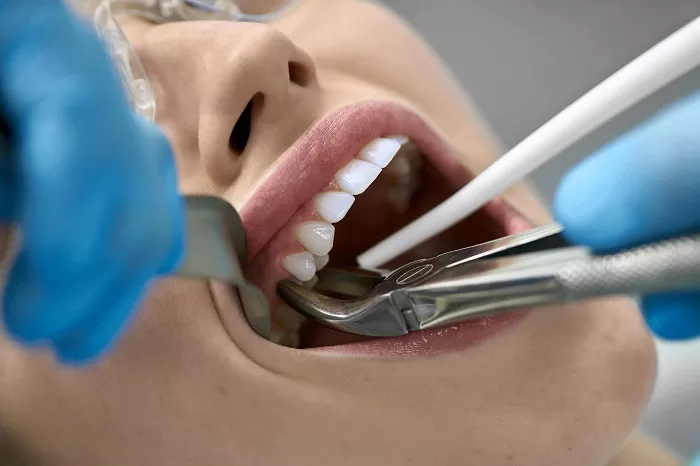Tooth extraction is sometimes necessary for children due to various reasons such as severe tooth decay, overcrowding, or trauma. The thought of it often raises concerns among parents and children alike regarding the level of pain involved. Understanding the nature and extent of pain during tooth extraction is crucial for ensuring a smooth and less traumatic experience for the young patients.
Factors Affecting Pain Perception in Kids
Age:
Younger children, especially those in the preschool age group, may have a more difficult time understanding and communicating about pain. They might also be more fearful and sensitive, which can heighten their perception of pain. Older children, on the other hand, may have a better ability to tolerate and describe the pain.
Individual Pain Threshold:
Just like adults, children have different pain thresholds. Some children are more sensitive to pain, while others may be relatively more resilient. Genetic factors, previous pain experiences, and overall temperament can all contribute to an individual’s pain threshold.
Type and Complexity of Extraction:
A simple extraction of a loose baby tooth is likely to cause less pain compared to the extraction of a permanent tooth that may be impacted or require more surgical intervention. The longer the procedure and the more manipulation involved, the greater the potential for pain.
Pain Management Before Tooth Extraction
Pre-operative Communication:
Dentists should take the time to explain the procedure to the child in a simple and age-appropriate way. Using pictures, models, or stories can help the child understand what will happen and reduce their anxiety. For example, showing a picture of the tooth being gently removed and explaining that it will be quick can ease their fears.
Topical Anesthetics:
Applying a topical anesthetic gel to the area around the tooth to be extracted can numb the surface and reduce the initial pain of the injection of local anesthesia. This helps make the injection process more tolerable for the child.
Sedation Options:
In some cases, where the child is extremely anxious or has a low pain tolerance, sedation may be considered. This can range from mild sedation using oral medications to deeper levels of sedation administered by a trained anesthesiologist. However, sedation also comes with its own set of risks and requires careful consideration and monitoring.
During the Tooth Extraction Procedure
Local Anesthesia Administration:
The injection of local anesthesia is a crucial step. Dentists should use a gentle technique and a small-gauge needle to minimize discomfort. Some dentists may also use distraction techniques such as having the child count or tell a story during the injection to take their mind off the pain.
Extraction Technique:
A skilled dentist will perform the extraction as quickly and efficiently as possible. Using proper instruments and techniques to minimize trauma to the surrounding tissues can reduce pain during and after the procedure. For example, a slow and steady extraction motion is often less painful than a jerky or forceful one.
Monitoring and Communication:
The dental team should continuously monitor the child’s comfort level during the extraction. If the child shows signs of distress, appropriate adjustments can be made, such as pausing the procedure briefly or providing additional pain relief measures.
Pain Management After Tooth Extraction
Post-operative Instructions:
Parents should be given clear instructions on how to care for the extraction site. This includes avoiding certain foods and drinks that could irritate the area, such as hot or spicy items, and keeping the area clean. Following these instructions can help prevent infection and reduce pain.
Pain Medications:
Over-the-counter pain relievers such as acetaminophen or ibuprofen can be given as prescribed by the dentist to manage post-operative pain. The dosage should be carefully calculated based on the child’s age and weight. It’s important to note that aspirin should generally be avoided in children due to the risk of Reye’s syndrome.
Cold Compresses:
Applying a cold compress to the outside of the cheek near the extraction site can help reduce swelling and numb the area, providing relief from pain. This should be done in short intervals to avoid damage to the skin.
Psychological Support for Kids
Positive Reinforcement:
Praising the child for their bravery during and after the procedure can boost their confidence and help them feel more positive about the experience. Simple words of encouragement like “You did a great job being still” can go a long way.
Comforting Environment:
The dental office should be designed to be child-friendly, with bright colors, toys, and a friendly staff. This can create a less intimidating atmosphere and make the child feel more at ease.
Parental Presence:
Allowing the parent to be present during the procedure, if the child desires, can provide emotional support. However, the parent should also be calm and reassuring to avoid transferring their own anxiety to the child.
Conclusion
Tooth extraction for kids does involve some level of pain, but with proper pain management strategies, both pharmacological and psychological, the experience can be made much more tolerable. By addressing the factors that influence pain perception and taking proactive steps before, during, and after the extraction, dental professionals and parents can work together to ensure the well-being of the child. It is essential to approach each case with individualized care, considering the unique needs and characteristics of the child, to minimize pain and anxiety and promote a positive dental experience.

